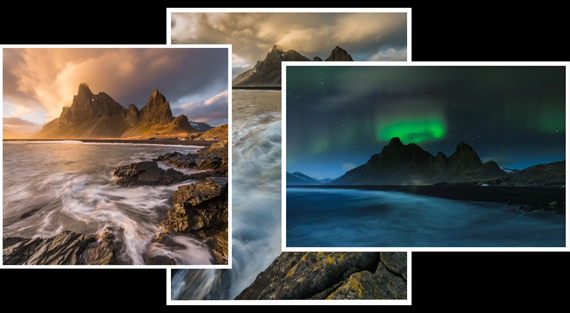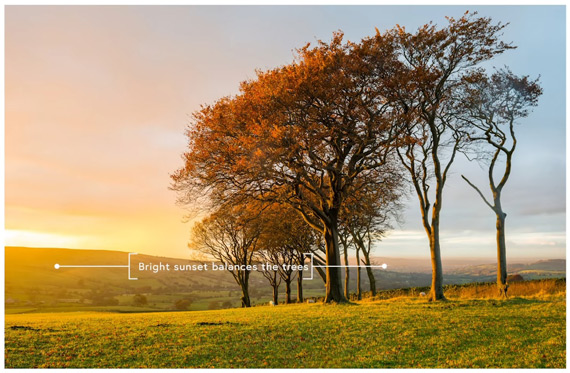Photography is a beautiful fusion between art and science. With photography, you can express your feelings and even tell stories in the form of photographs. But, there can be moments where you feel stuck due to some kind of barrier. It may be something technical, a creative block, or may even have to do with behavior. Photographer Nigel Danson asked thousands of photographers what they thought was the hardest part of landscape photography. And in this video, he explains how you can overcome 7 of the most common challenges in landscape photography:
1. Focus
The most common questions that come up when we talk about focus is about where to focus, and getting the maximum depth of field.
“There are a few rules you can follow to make sure you get everything in focus.”
- Wider lenses have greater depth of field and so they get more of the scenery in focus. Telephoto lenses on the other hand have shallower depth of field and they get less of the landscape in focus.
- To get the most of the scene in focus, you can set your focus to the hyperfocal distance. There are many apps that can help you determine the hyperfocal distance. However, if your scene comprises mostly of the the hills and the mountains, it is a good idea to focus on them.
- If you do not have hills and mountains in the scene, but if you’re shooting in a woodland, focus on the most prominent tree. Think of the prominent tree as the main character in the scene, and then set your focus on that particular tree.
2. Boring Locations
Photography is not necessarily fun when it comes to shooting in urban areas. The city doesn’t have the grand vistas the countryside has, and that’s where the challenge arises. What you need here is determination, and a creative eye.
Another thing to keep in mind is the conditions you are shooting in. Even if the area looks boring, the photos can come out quite dramatic if the lighting and weather conditions are interesting. Sunrise, sunset, and misty conditions, for instance, help in creating some amazing shots.
3. Time and Motivation
When it comes to landscape photography, you can’t just go out to a location, and start taking photos. You need time to scout a location, understand the lighting, and plan out the shot. And for many people out there, this can be a real challenge.
“But I think there’s always an ability for people to find time if they want to.”
You can use photography as something that you do to relax. So, if time is really a constraint, look for areas close by that you can get to easily. It could be a small woodland, a park where you take your dog for a walk, or even a beach. Take your camera out with a friend and try out different compositions and techniques that’ll help you improve your photography.
If you find that you don’t do much during the morning hours, you can try waking up early once in a while and go out to shoot sunrise before heading to work.
“It’s more about motivating yourself to find that time.”
4. Woodland Photography
When we think of landscape photography, grand vistas, great waterfalls, and gorging rivers, come to mind. In these types of locations you get many more options for composition thanks to the open space. When it comes to woodland photography, things are a bit different. You are surrounded by trees in every direction and finding a good composition can be a real challenge.
5. Locations
Finding a good location to photograph can turn out to be a very big deal for some. Where’s the fun in photography if you always need to hike up a mountain for some good looking photos?
- It is a good idea to find a good location that you can plan to visit again and again. Doing so in different lighting and weather conditions will yield different and interesting photos every time.
- When you’re out on location, do not make a habit of running around trying to shoot every composition. You’d be better off choosing a handful of those, and sticking with them.
6. Lighting
You certainly can’t control lighting when it comes to landscape photography. But, the good thing is that it is very much predictable. It is therefore quite important that you understand how lighting will affect the landscape that you are planning to shoot.
“People have preconceived ideas that they need to go out in golden light.”
Well, shooting during the golden hour and the blue hour does give you beautiful landscape photos most of the time. However, they aren’t the only times that you can photograph. By understanding how the landscape you want to photograph is being lit, and by embracing it, you can take amazing looking photos even in the mid-day sun.
7. Composition
Leave out all the technicalities from the equation, and it is composition that either makes or breaks a photograph. However, in Danson’s survey, around 23% of the respondents felt that they struggled with composition.
“Compositions don’t just jump out to me. It requires a lot of effort and work.”
Danson shares his three favorite tips for improving composition:
- If you realize that you keep adding elements to your frame, stop right away. Rather make a habit of removing things from your composition to keep it as simple as possible. If anything doesn’t add value to a composition, get rid of it.
- Try and balance your images in terms of distribution of elements. Balance can even be in terms of light and shadows.
- Landscape photography doesn’t always need to be shot with a wide angle lens. Using a longer lens can allow you to go tighter and isolate your subjects. This comes in handy when you want to remove things that aren’t adding value to your composition.
Hopefully this post covered any challenge that you might have been facing in landscape photography. Do you have any other difficulties when photographing landscapes?
Like This Article?
Don't Miss The Next One!
Join over 100,000 photographers of all experience levels who receive our free photography tips and articles to stay current:








2. there are no boring locations. There are people with camera’s who take boring pictures.